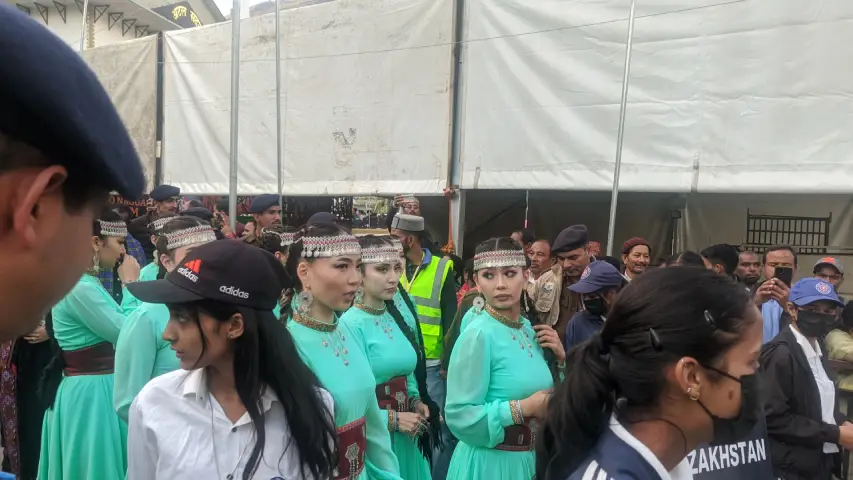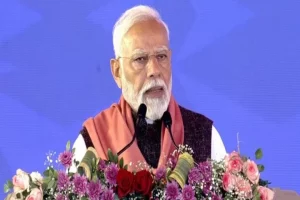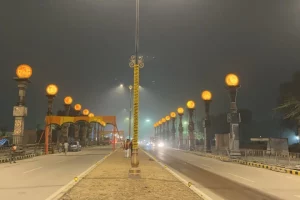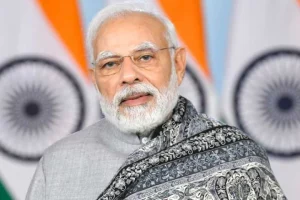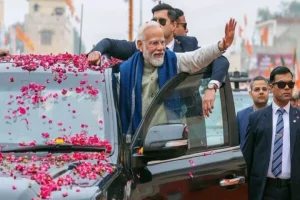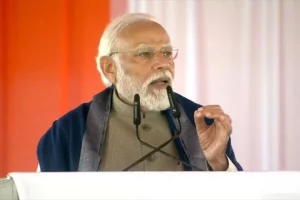Shimla: Miles away from Ayodhya—where the preparations have begun for “pran pratishtha” of Ram temple, slated for January 22, the valley of Gods as Kullu is known, has its close connection with ‘Ramlalla’.
Even as week-long ,17th century old Kullu Dussehra marked its end with return of Lord Raghunath (other name of Lord Ramlalla)—a presiding deity of Kullu on Monday evening, the atmosphere at iconic Dhalpur ground was filled with joy, religious fervour, and divinity.
“Next year when we celebrate Dussehra, which begins on Vijayadashami day, on arrival of Lord Ragunath’s chariot to Dhalpur maidan, Prime Minister Narendra Modi would have done the rituals of pran pratishtha at the newly built Ram temple” declared Maheshwar Singh, who is Charibardar (chief caretaker of Lord Raghunath)
Singh is scion of Kullu’s royal family, a former state BJP president and ex-MP, who is also getting ready to stake his claim for Mandi Lok Sabha seat in the coming 2024 parliamentary polls.
The legend about the 370-plus year old Kullu Dussehra goes that it was ‘Raja’ Jagat Singh, who ruled the kingdom of Kullu (1637 to 1672) started the celebration of Dussehra.
Once Raja Jagat Singh learnt that a peasant named Durgadatta was in possession of many beautiful pearls. But Durgadatta’s only pearls were ‘pearls of Knowledge.’
However, in his greed, the Raja ordered Durgadutt to hand over his pearls or be hanged. Knowing of his inevitable fate at the hands of the king, Durgadatta threw himself into the fire and cursed the king, saying “Whenever you eat, your rice will appear as worms, and water will appear as blood”—something that the Raja encountered.
The distressed Raja now sought help from a saint Krishnadas Payahari who told him that to eradicate the curse, he must retrieve the deity of Raghunath from Ayodhya and install it in his kingdom. He sent a Brahmin, named Damodar Dass to fetch the idol and bring it to him.
The Brahmin, set-out for Ayodhya and stole the idol before he started his return journey. The people of Ayodhya, finding their beloved Ragunath missing, started chasing Kullu Brahmin.
On the banks of the Saryu River, they approached the Brahmin and asked him why he had taken Raghunath ji. The Brahmin recounted the story of the Kullu king. The people of Ayodhya attempted to lift Ragunath, but their deity became incredibly heavy when headed back towards Ayodhya, and became very light when headed to Kullu.
On reaching Kullu Ragunath was installed as the reigning deity of the Kullu kingdom. Thereafter the rituals of Dussehra started as Raja declared Raghunath ji as presiding deity of Kullu. It started in 1606 and continues till now. The descendants of Raja continue to conduct the rituals.
Asked if the spirit of Dussehra will continue or the politics will eventually take over, Maheshwar Singh told India Narrative that “till I am alive, the tradition will continue without a compromise. The successive governments had always tried to undermine his position as Chief Caretaker and earlier Chief Minister Virbhadra Singh ordered take-over of the temple by the government but Lord Raghunath did not allow such tactics to work.”
As per practice, around 200 local deities including goddess Hidimba from Manali are brought ceremoniously to the Temple of Raghunath during Dussehra and the festival starts with Rathyatra at Rath Ground to Dhalpur maidan. The state government has given the status of an international festival to the Kullu Dussehra in 1972
It is quite amazing that though the era of the Kings and emperors was over long back, Kullu Royalty remains the nucleus of mega celebrations –a symbol of people’s faith in the deity culture.
This time Dussehra was held after massive devastations caused by natural calamities, resulting in large numbers of human losses and property having been washed away by the floods and landslides. Still, the spirit of Dussehra was overwhelming, admits Dev Kanya, a young author of several books on Kullu’s deity culture.
Surat Singh Thakur, a professor of Music and historian says Ayodhya connection with Dussehra is well cemented and Ramlalla lives in the hearts of people here in the valley.
In 2014-2015, the 17th century priceless idol of Raghunath along with four other idols were stolen from the temple. The ‘ashtadhatu’ Raghunath idol was later found at Bajaura in the outskirts of Kullu after the police apparently tightened the noose around some Nepali nationals, who were behind this theft. The idols were reinstalled at the temple with a lot of rituals performed at the temple by the priests.
Also Read: Luxury cruise on Ayodhya’s Saryu River to start as Ram Temple takes shape






